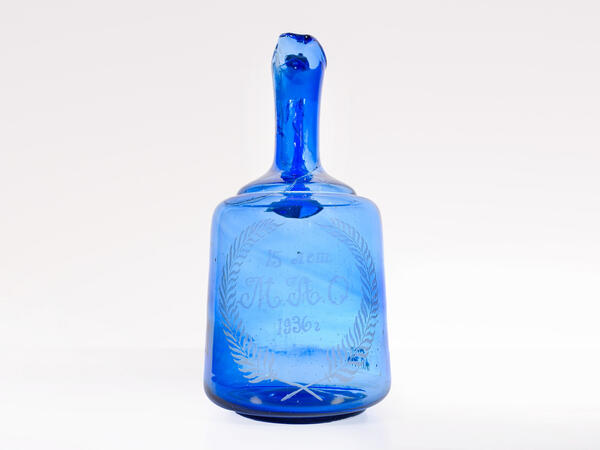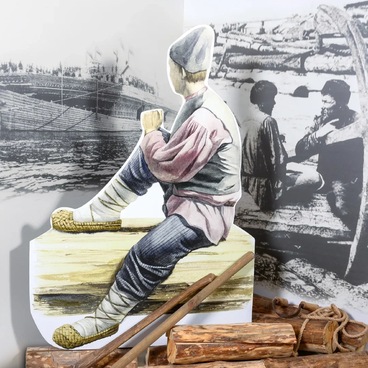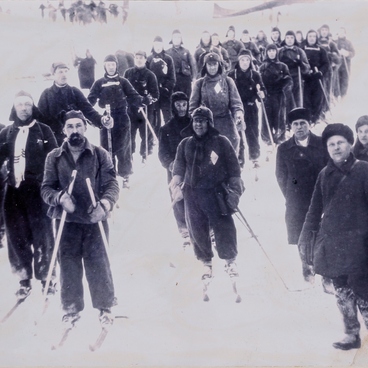The collection of the Timofey Yevseev National Museum of the Republic of Mari El contains a blue glass decanter with a commemorative inscription. It was made at the “Mariets” glassworks in 1936 to commemorate the 15th anniversary of the formation of the Mari Autonomous Region within the USSR.
Even before the Bolshevik revolution occurred, the Mari region already became one of the centers of the glass industry in Russia. In this region, limestone and quartz sand were mined, which are necessary to produce glass. It was convenient to deliver the products manufactured in the Mari region to Kazan and Nizhny Novgorod or ship them to other cities along the Volga.
In 1842, the Kazan merchant Yegor Ulyanov founded a crystal and glass factory in Mari El, which he named “Nikolayevskaya” — in honor of Emperor Nicholas I, who ruled at that time. It was the only enterprise in the Middle Volga and Ural regions where crystal products were produced. A working settlement was founded around the factory, which was named in honor of the owner — Ulyanovsky.
In 1858, Ulyanov opened another factory in Mari El that was located not far from the village of Sardabash. The owner leased it to the lady-in-waiting of the Imperial Russian Court Yelizaveta Lavinskaya. In 1875, one of the first workers’ strikes in Russia took place here, and five years later, the enterprise had to be closed.
The “Nikolayevskaya” factory in the Ulyanovsky settlement remained in operation. By the end of the 1880s, it produced about 600 types of glassware — tableware, pharmaceutical ware, chemical ware, technical ware. A new factory with advanced steam equipment was opened next to the old building. At the beginning of the 20th century, this enterprise became the most powerful in the Volga-Kama region and received medals at several Russian industrial exhibitions.
After the Bolshevik revolution, the “Nikolayevskaya” factory was renamed and became “Mariets” Glassworks. The settlement around it received the same name. In the 1930s, electricity was installed in the area and the equipment was improved: the workshops now had semi-automatic lines for the production of glass containers. Until 1987, the enterprise produced glass bottles, tableware, medical bottles. Unfortunately, it was closed during Perestroika.
Even before the Bolshevik revolution occurred, the Mari region already became one of the centers of the glass industry in Russia. In this region, limestone and quartz sand were mined, which are necessary to produce glass. It was convenient to deliver the products manufactured in the Mari region to Kazan and Nizhny Novgorod or ship them to other cities along the Volga.
In 1842, the Kazan merchant Yegor Ulyanov founded a crystal and glass factory in Mari El, which he named “Nikolayevskaya” — in honor of Emperor Nicholas I, who ruled at that time. It was the only enterprise in the Middle Volga and Ural regions where crystal products were produced. A working settlement was founded around the factory, which was named in honor of the owner — Ulyanovsky.
In 1858, Ulyanov opened another factory in Mari El that was located not far from the village of Sardabash. The owner leased it to the lady-in-waiting of the Imperial Russian Court Yelizaveta Lavinskaya. In 1875, one of the first workers’ strikes in Russia took place here, and five years later, the enterprise had to be closed.
The “Nikolayevskaya” factory in the Ulyanovsky settlement remained in operation. By the end of the 1880s, it produced about 600 types of glassware — tableware, pharmaceutical ware, chemical ware, technical ware. A new factory with advanced steam equipment was opened next to the old building. At the beginning of the 20th century, this enterprise became the most powerful in the Volga-Kama region and received medals at several Russian industrial exhibitions.
After the Bolshevik revolution, the “Nikolayevskaya” factory was renamed and became “Mariets” Glassworks. The settlement around it received the same name. In the 1930s, electricity was installed in the area and the equipment was improved: the workshops now had semi-automatic lines for the production of glass containers. Until 1987, the enterprise produced glass bottles, tableware, medical bottles. Unfortunately, it was closed during Perestroika.



